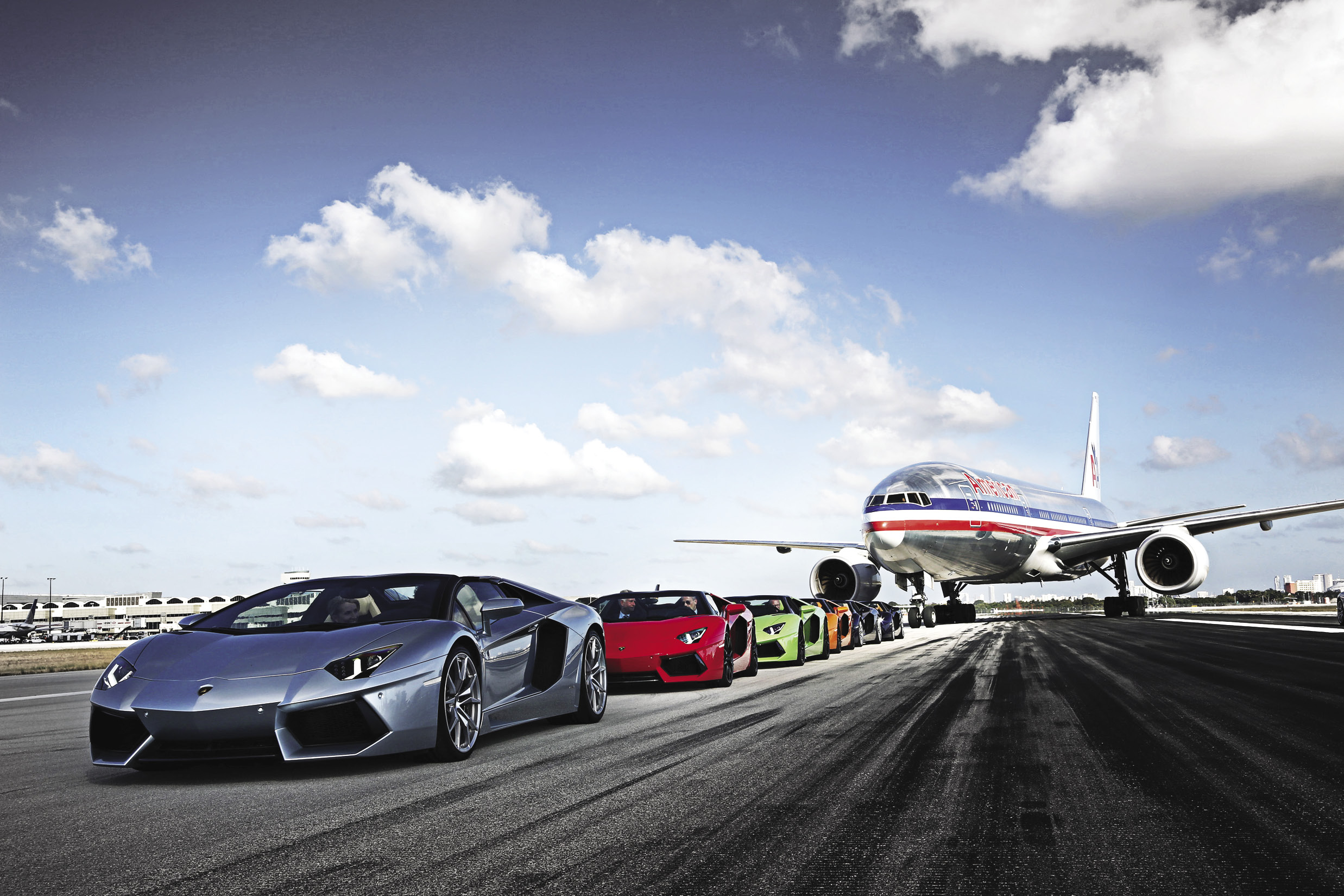
Drop-top road rocket
Miami, FL – The Lamborghini Aventador is far too fast for public roads, that’s all there is to it. When I drove the original closed-roof model, introduced in 2011, it was on public roads. More specifically, these were the public roads outside Bologna, where traffic is fairly thick, the paved surfaces narrow and the Lamborghini felt a bit like Godzilla visiting Tokyo.
Based on that experience, there was next to nothing I could write about that car’s performance, apart from saying that when the road went straight in brief bursts, the Aventador responded like a lit fuse. To sum up in full, it was the second-most frustrating supercar driving experience, next to driving a Bugatti Veyron in rush hour on the Don Valley Parkway.
For the introduction of the convertible version of the Aventador, a much more product-appropriate driving experience was arranged: a visit to Homestead Speedway outside of Miami, followed by the requisite leisurely drive to make sure the audio system and other sundry items worked as advertised.
No one is under the illusion the Aventador Roadster will be anyone’s regular track car… unless that anyone is an oil baron with more money than common sense. Even the hardtop version is unlikely to see much track duty; for this kind of purpose, Lamborghini has the more appropriate Gallardo range, including the race-ready Super Trofeo.
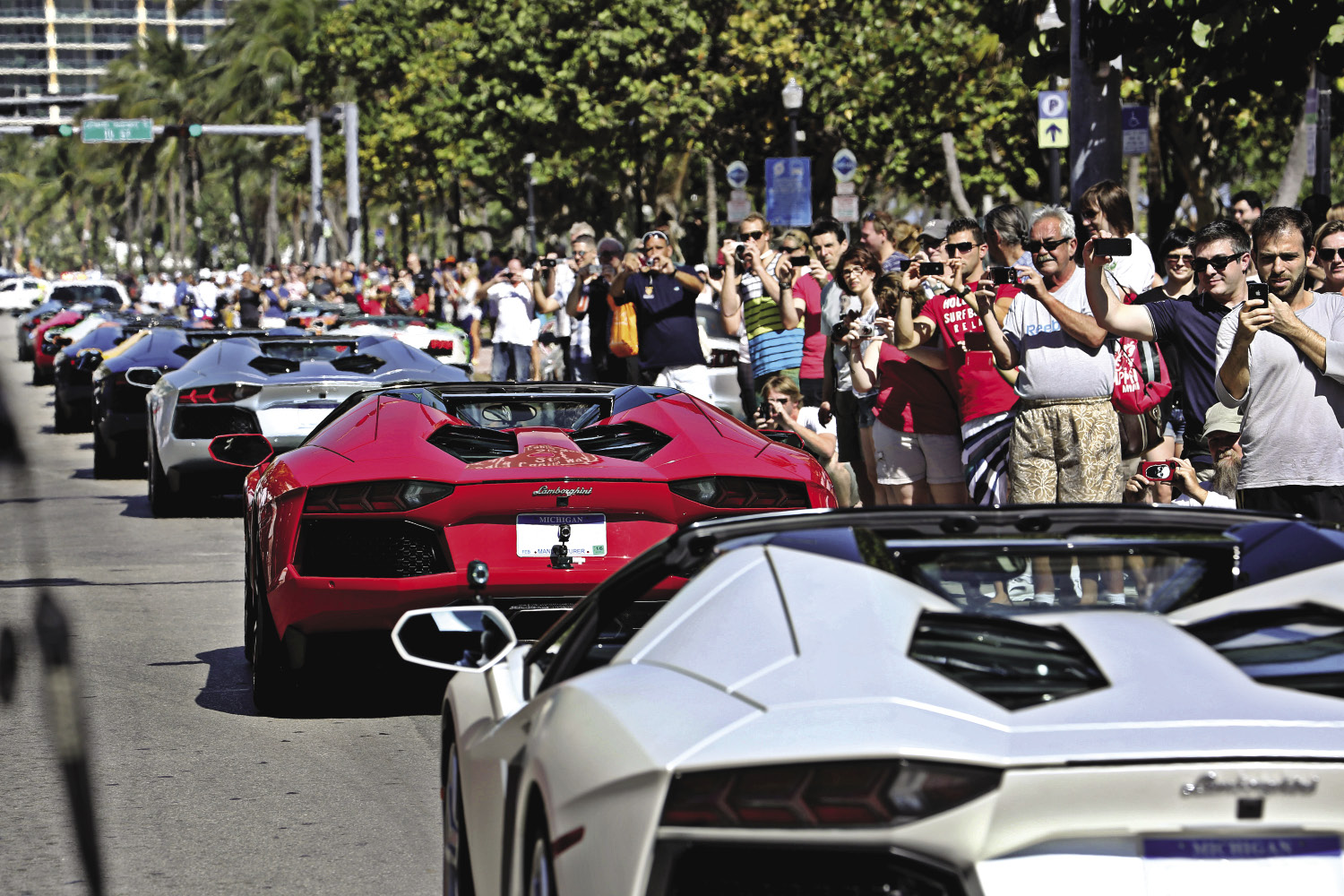

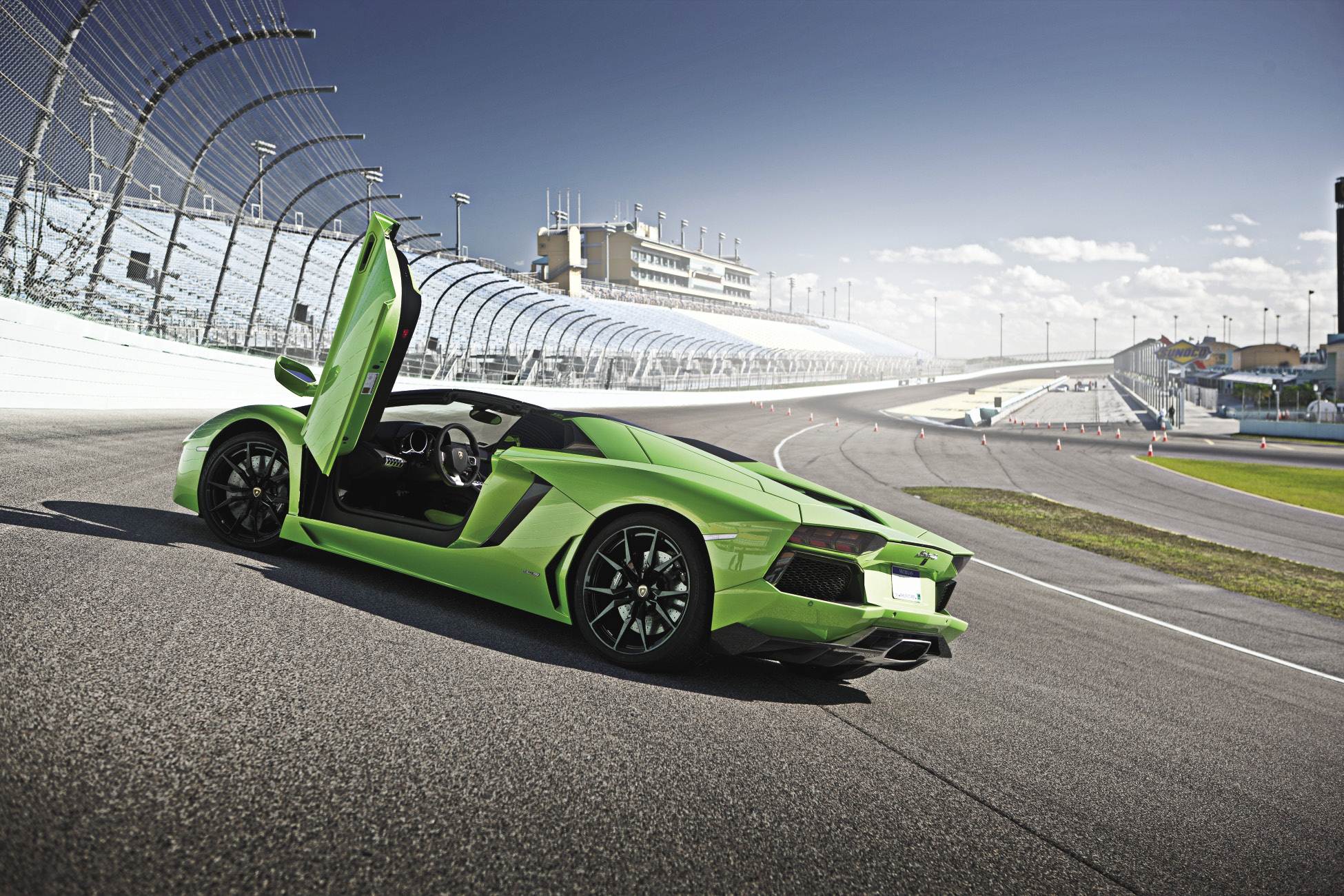

But to reiterate: The Aventador is a very fast car and it’s best tested in a facility with plenty of open road, even more run-off area, and emergency medical assistance ready and waiting. This is, after all, a 700-hp supercar with all-wheel drive, three distinct engine management settings, including one called “corsa” (“track”) and a launch control system.
Since the introduction of the coupe, a few significant changes have been made to the 6.5-litre V12: cylinder deactivation technology and an automatic start/stop system have combined to cut fuel consumption by some 10%. (New versions of the coupe now use the new engine as well; both versions stick with the single-clutch, eight-speed automatic transmission.)
There’s also been some fairly ingenious engineering taking place at Lamborghini HQ to convert the coupe into a convertible. The roof consists of two removable carbon fibre panels that weigh six kg each. Once removed, the panels fit into the storage compartment under the hood in what is a fairly complex stack-and-latch system. With the panels stored, luggage space is reduced greatly, making even weekend getaways a tricky proposition.
There are other differences between the roadster and the coupe. The entire back hatch area on the roadster features a spine-like design that allows the V12 to remain the focal point. With the roof panels removed, the Roadster is even more striking than the Coupe.
Overall, the conversion to drop-top status has added just 50 kg to the weight of the car – astonishingly low, especially when considering the torsional rigidity of the Roadster is on par with that of the Coupe – making it only fractionally slower than its predecessor: It completes the run from zero-to-100 km/h in three seconds and has a top speed of 350 km/h.
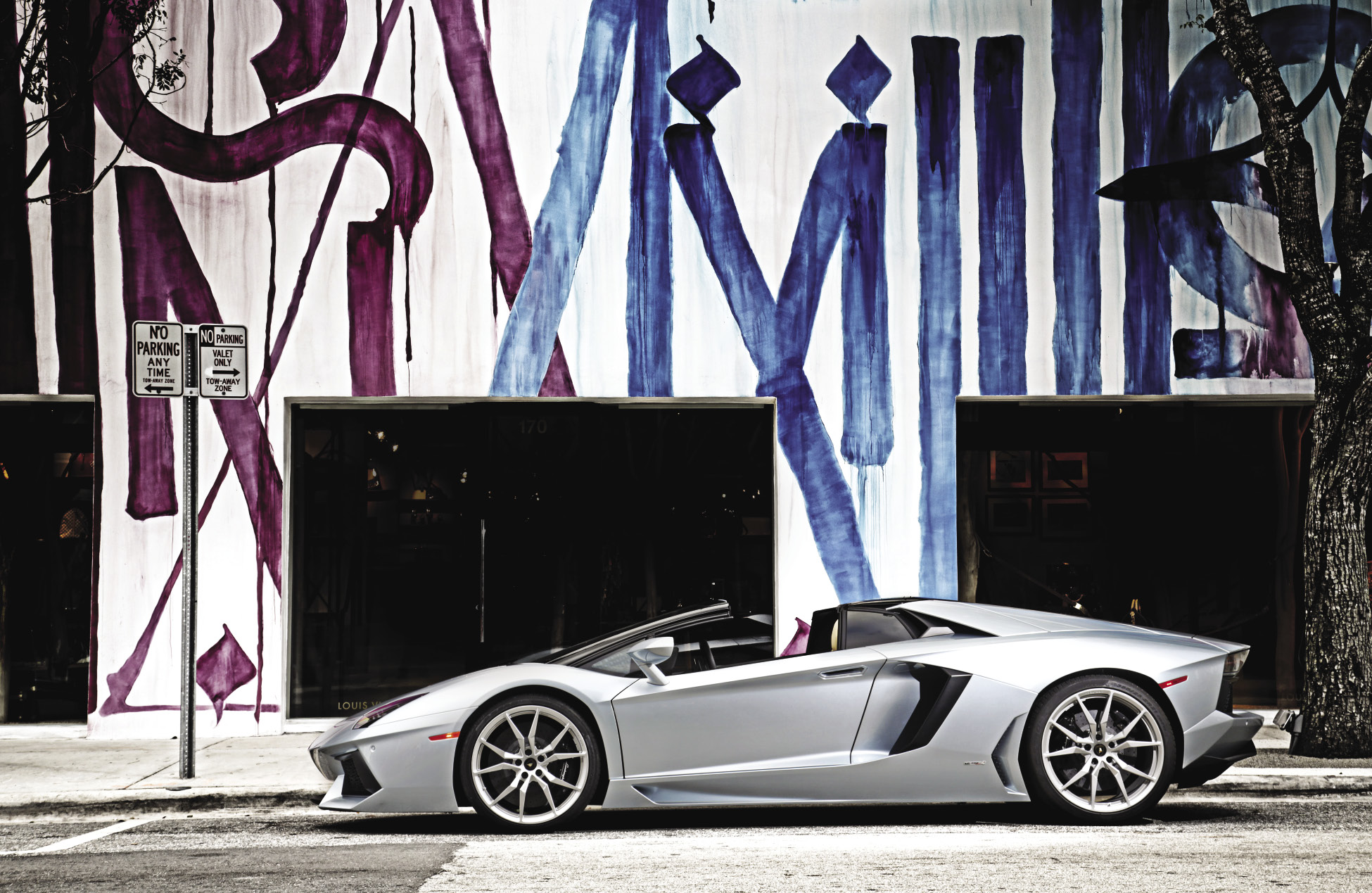


There’s nowhere better than a racetrack to verify such figures. The plan was not to use the full oval at Homestead – that would have been an interesting adventure in and of itself – instead, we used one corner of the oval, linked to an infield course. This set-up provided ample opportunity to feel how the Lamborghini handled tight corners, quick transitions and, of course, rapid acceleration.
The first session was all about familiarization, especially as I was tasked with wheeling a right-hand drive version. Setting the car in “strada” mode to start proved to be a less than inspired choice: Although the “most relaxed” setting seemed like it might be a good way to learn about the Aventador Roadster and it does offer the least tail-happy torque distribution for the AWD system (30% front; 70% rear). It also triggers the most aggressive traction control intervention.
All of this made for a herky-jerky few laps as I easily exceeded the limits of adhesion – according to the on-board computer – and was met with the proverbial throwing out of the electronic anchor. A few times, I could count tenths of a second slipping away as I waited for the power to return while exiting a corner with too much gusto.
The next time around, things worked better, but only slightly better. The “sport” setting, the middle-of-the-road in terms of electronic intervention, also features, surprisingly, the most tail-happy torque distribution (10% front; 90% rear). The Roadster wasn’t completely happy in this setting either – or, more accurately, it wasn’t happy with me attempting to send that entire 90% to the gigantic rear tires before the front wheels were completely straight.
Second lesson learned. What was needed was far less babysitting and far more freewheeling track action. Thus, for the third and all subsequent sessions, it was “corsa” mode or bust. From that throttle-tipping point on, progress was made. The Aventador showed far more willingness to being tossed into the tight corners.
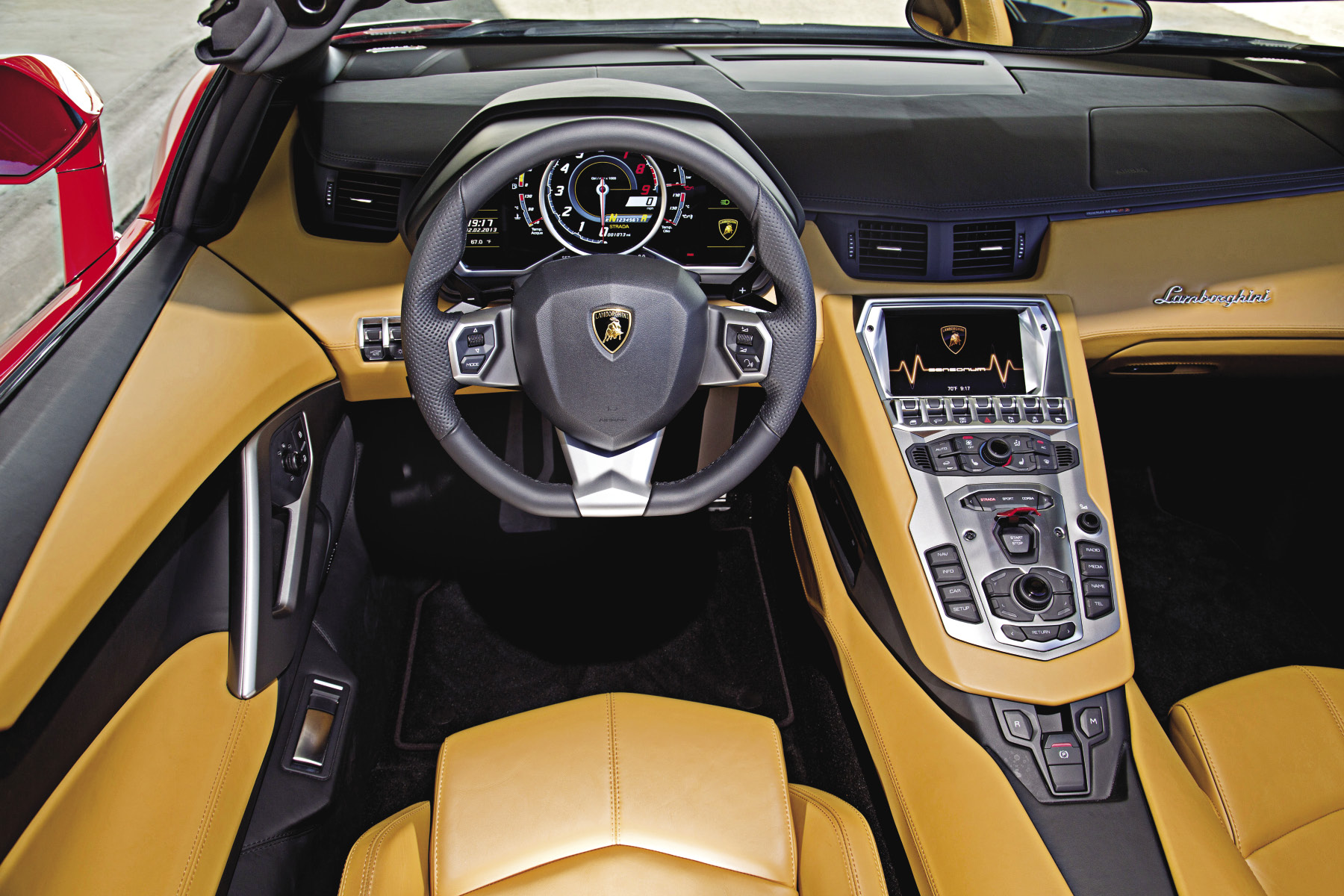
As familiarity with the track grew, there were no indications the traction control system was kicking in – with an AWD system and massive tires (optional 20-inch rubber in the front, 21-inch numbers in the back), it takes some effort to stay on the proper racing line and still manage to get the Lambo out of shape.
From that point on, it was a matter of building speed and getting closer to the limits of the car. A quick chat with one of the Lamborghini instructors, Richard Antunicci, confirmed I was too impatient with the throttle. He also suggested coasting into the corners rather than trail braking.
Back in 2003, Antunicci beat Lewis Hamilton, Robert Kubica and Nico Rosberg in an F3 race in Korea. My thinking: If he offers some advice that runs contrary to common thought on how to generate speed in an AWD supercar, I’m going to listen. I did listen. He was right: By coasting into the corners and being more patient with the throttle, the Aventador felt far more stable and more able to put the power down coming out of the corners.
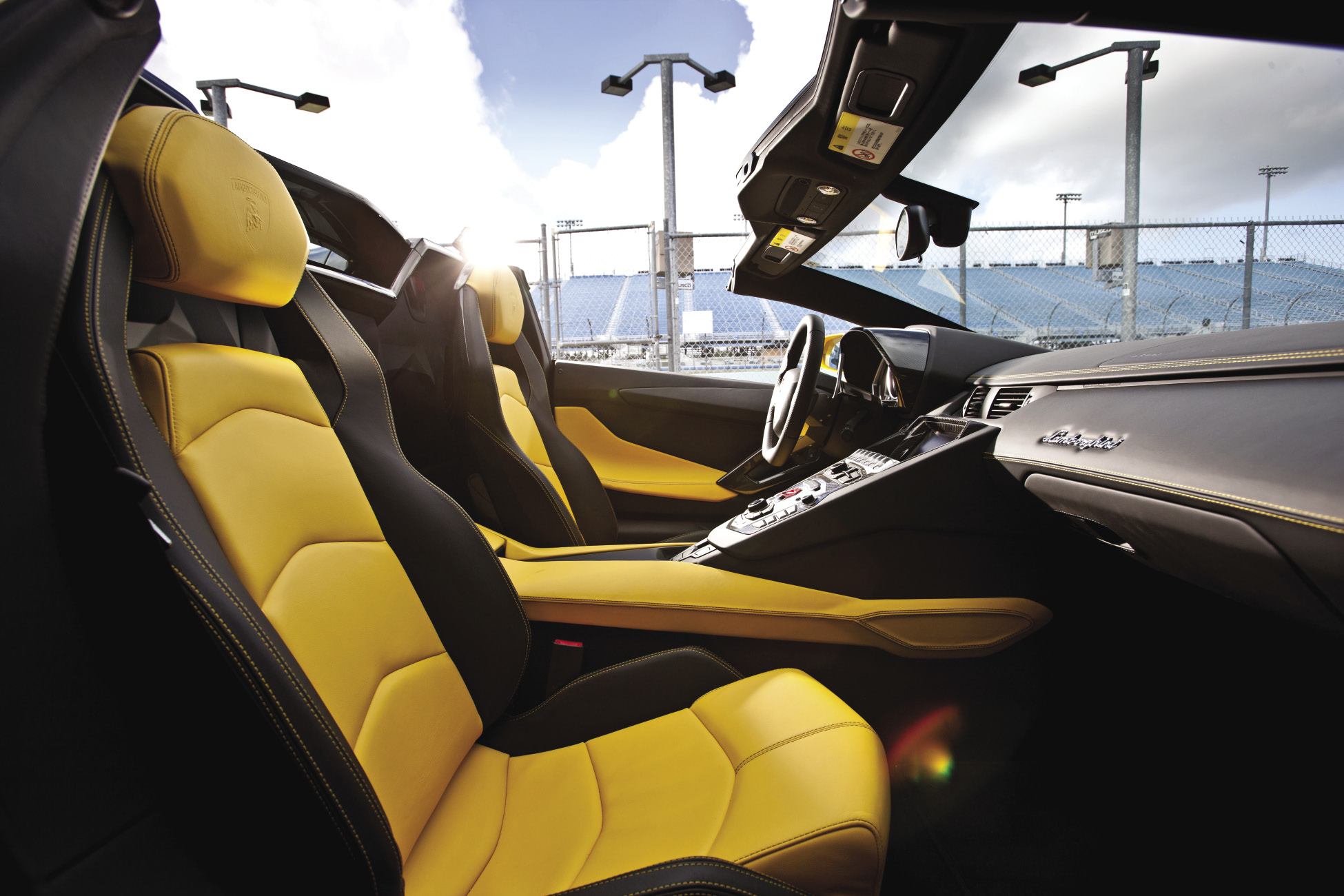
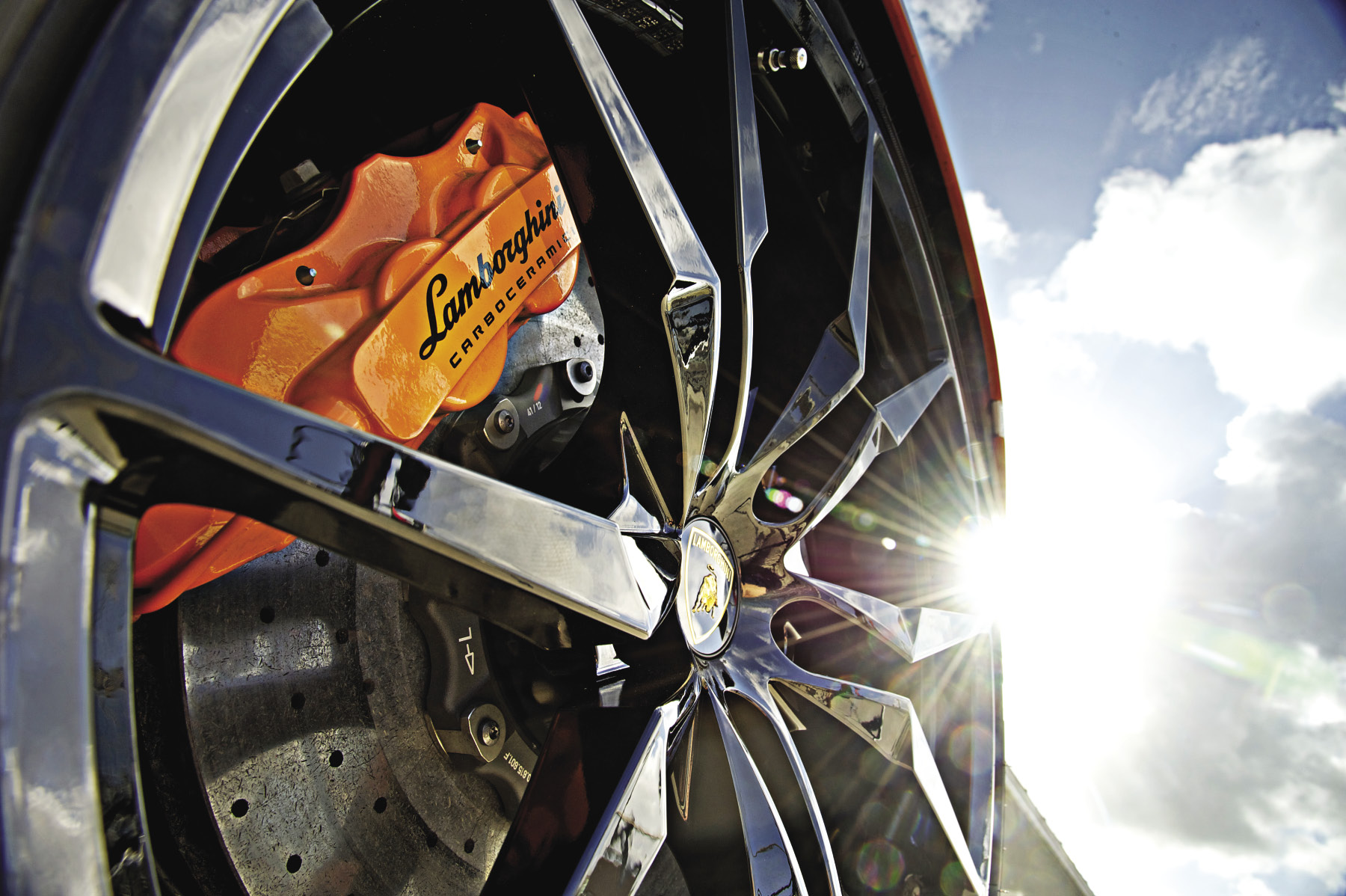

By the end of the track session, I was finally feeling the car move around underneath me in controlled little power slides and the enormous reserves of power coming from that ferocious V12 seemed a bit easier to control. Then, the tires on all the track cars slipped away and it was time to return to the garage for good.
In listening to the comments of other journalists after the action had concluded, one thing became clear: The Aventador is very easy to drive quickly and very difficult to drive very quickly. More than one of my colleagues overshot turns and ended up on the grass. A few others spun out. And still more were driving so slowly, they were clearly intimidated by the car.
So, no, the 2013 Lamborghini Aventador Roadster is not a track car. But it is a car you could take to the track if you were so inclined. Bring your reflexes, though, because this thing will test your capabilities to their fullest. Prices for the latest Lamborghini begin at $485,000.
Specifications
2013 Lamborghini Aventador Roadster
Base Price: $485,000
Engine: 6.5-litre V12
Horsepower / Torque: 700 hp / 509 lb-ft
Configuration: MA
Transmission: 7-speed ISR automatic
Fuel Economy Ratings: 24.7 / 10.7 / 16.0 L/100 km (city / hwy. / comb.)






















